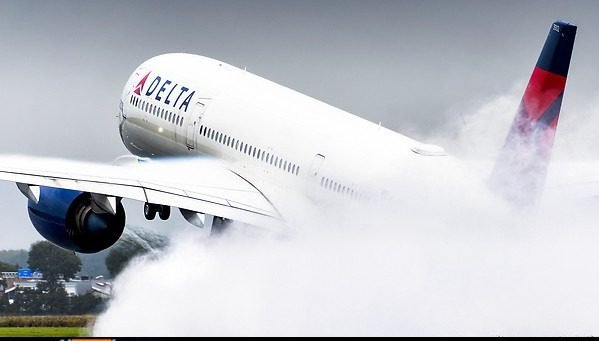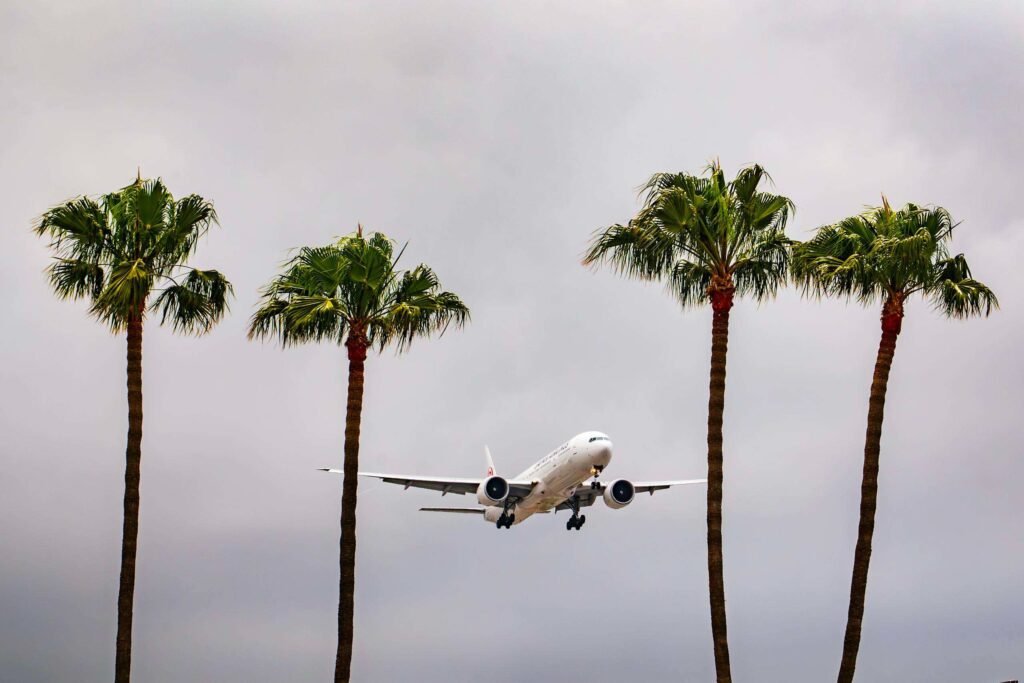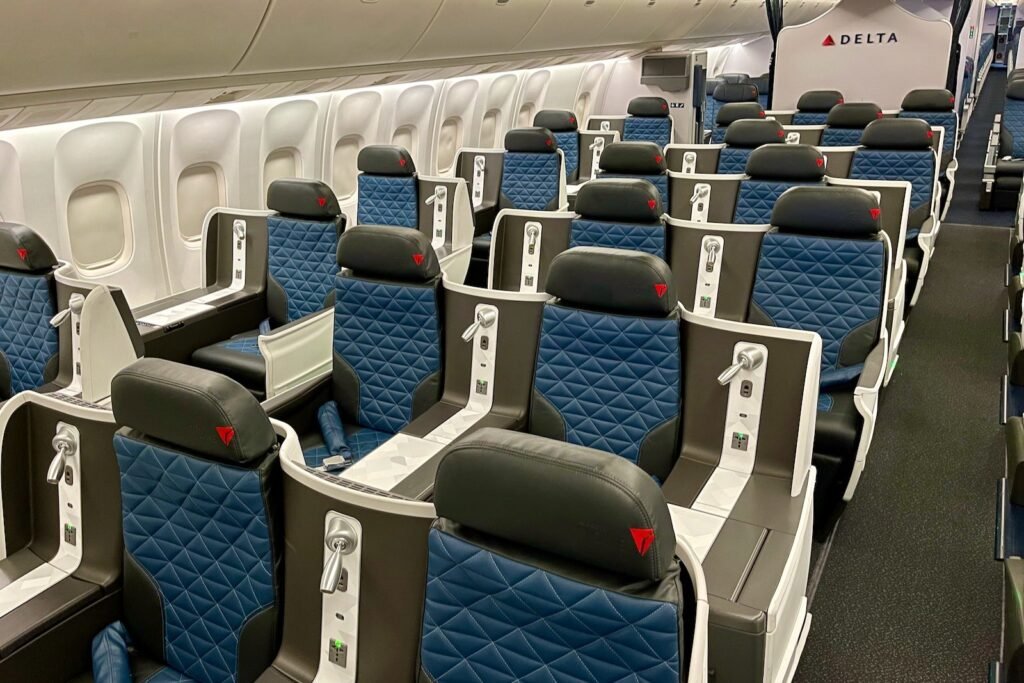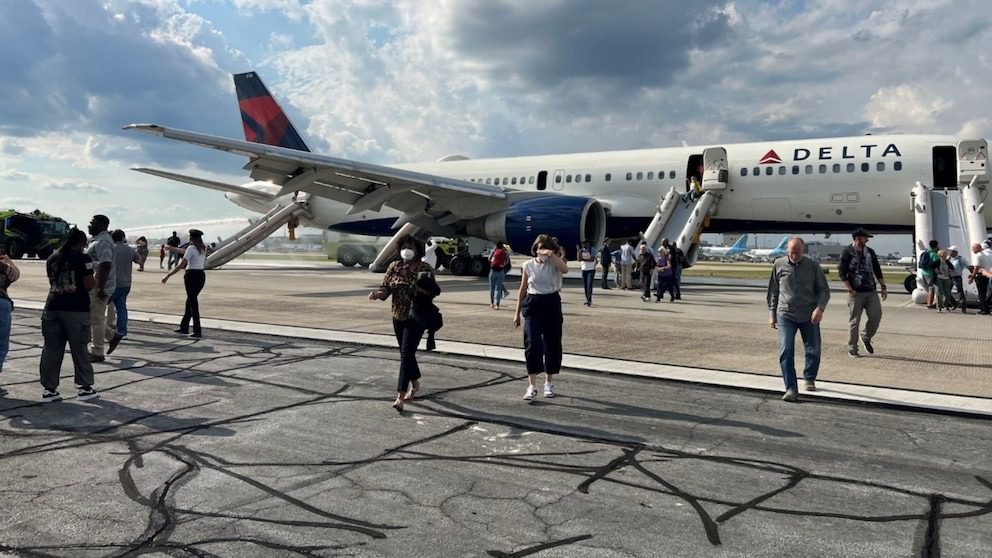Welcome aboard as we explore Delta Flight DL275: Insights into Trans Pacific Aviation Dynamics in a way that connects with you. This flight represents a key daily international route, linking bustling cities and cultures. Covering Detroit to Tokyo flights, DL275 has drawn attention for its recent diversion to LAX, which spotlighted the role of codeshare VN3031 and the importance of flight departure calendar awareness. Curious travelers often track DL275 status to compare scheduled vs. arrived flights and dive into its flight DL275 recent history—it’s more than a flight; it’s a window into how modern aviation bridges continents.
For more latest news checkout, Pakistan coverage.
Delta Flight DL275 Overview
Delta Flight DL275 stands out among Detroit to Tokyo flights, operating reliably as a daily international route and appearing in the flight departure calendar for travelers planning cross-continental trips. Some airlines offer this service via codeshare VN3031, reflecting seamless global partnerships. Curious passengers often track DL275 status to compare scheduled vs. arrived flights, turning into a habit when planning tight layovers. This real-time insight into flight DL275 recent history helps passengers stay informed and prepared. The route combines comfort, punctuality, and transparency—key for long-haul US-based travelers relying on timely updates and solid operations.
Route Details
Flight DL275 departs Detroit Metro Wayne County Airport and touches down at Haneda Terminal 3 arrival, bridging the Midwest and Asia in one flight. Spanning about 6,381 miles, the flight typically clocks a flight time 13h 20m, though wind and weather influence that. By reviewing arrival and departure times on tools like Trip.com or FlightAware, passengers can view full route information and schedule backups. Seeing the flight in the flight departure calendar helps users anticipate delays or plan connections. This route isn’t just geography—it’s a lifeline for business, family visits, and global commerce between the US and Japan.
Aircraft Used: Airbus A350‑900

Delta flies DL275 using the efficient Airbus A350‑900, prized for its quiet cabin, lower emissions, and fuel economy. With Delta operating 38 of these jets by 2025, this aircraft enhances Detroit to Tokyo flights with comfort and fewer flight performance and delays compared to older models. The A350 ensures smooth long-haul service, equipped with mood lighting, Wi-Fi, and spacious cabins for better passenger experience. These features reduce jet lag and increase satisfaction. Plus, knowing the aircraft helps with terminal and gate details, since large jets often use specific gates. The A350 proves that advanced engineering can improve reliability and passenger comfort.
Read our latest blog posts and insights, click here.
Timeline of Events
On May 27, DL275 departed Detroit on time, cruising high over the Pacific—a standard milestone in flight DL275 recent history. Midway, while currently en route above the North Pacific, the crew detected a concerning technical glitch. Within minutes, their routine flight became a tense situation demanding quick decision-making. The aircraft diverted to Los Angeles instead of continuing to Tokyo, a solid strategic move rooted in safety. This moment highlights how rapidly a regular journey transforms into a high-stakes situation. When tracking, you can see those shifts in scheduled vs. arrived flights, which help explain delays to anxious travelers.
Reason Behind Emergency Diversion
The diversion occurred because the Rolls-Royce Trent XWB engine’s engine anti‑ice system failed. At cruising altitude, iced components could jeopardize thrust and safety. The crew prioritized safety and diverted rather than risk continuing. Anyone who tracks DL275 status saw how scheduled vs. arrived flights diverged. This incident underscores a fundamental aviation principle: when systems fail, flight operators pivot to preserve life and safety. Even amid modern technology, invisible system faults—like anti-ice failure—can trigger emergency reroutes. It reinforces that aviation is as much about smart human judgment as it is about mechanical sophistication.
Technical Issue: Engine Anti‑Ice System

At high altitudes over icy air, engine anti-ice systems work by heating critical components to prevent ice. On DL275, this system malfunctioned. Ice can block airflow or disrupt thrust, making flights unsafe. As aviation reports outline, anti-ice failure is serious enough to trigger immediate diversion. Hidden yet vital, anti-ice systems safeguard every Detroit to Tokyo journey. When such systems falter, airlines must act fast. This scenario emphasizes that unseen technology plays a front-line role in long-haul safety, and that human oversight remains crucial even on high-tech aircraft.
To get all the latest news, click here.
Landing at LAX: Key Facts
LAX wasn’t chosen by chance—it offered critical services: 24/7 Rolls‑Royce engine support, Airbus A350 maintenance resources, and lengthy runways needed for safe landing. Landing on Runway 06R at around 01:08 AM brought relief to passengers and crew. The shift from scheduled vs. arrived flights taught travelers just how fluid flight plans can be when safety calls the shots. LAX, a major Delta hub, provided infrastructure and services essential for grounding the aircraft and aiding passengers. A diversion like this isn’t merely a reroute—it’s a precision response, balancing urgency with logistical strength.
Passenger Experience and Rebooking
Despite the disruption, passengers remained calm thanks to clear communication from crew members. Delta arranged rebooking and accommodations efficiently, even though the aircraft was grounded for about 18.5 hours for repairs. One passenger described leaving the plane feeling informed, not abandoned. It’s a testament to Delta’s preparedness—offering meals, hotel stays, and onward booking. This shows that when unplanned changes occur, en route flight updates, grounded support, and empathy can transform a stressful moment into one managed with care. It’s human-first service paired with operational muscle.
Delta’s Safety Protocols & Statement

Delta issued a prompt response. They explained the anti-ice issue, the diversion decision, and how they prioritized passenger well-being. No one was hurt, and protocols worked. Delta’s transparency and efficiency underscore its robust safety culture. Their statement reinforced that Delta Flight DL275 is protected by layers of training, simulation, and safety protocols. This honesty helps passengers trust the process during future disruptions. It’s a powerful blend: technology falters, people respond, and systems catch it again—so flyers can still count on the next flight to be smooth.
Historical Incidents of Delta Diverted Flights
Similar diversions have happened in Delta’s history: flights diverted due to smoke, pressure issues, or technical alerts. Many ended safely with minimal outage. When comparing that with flight DL275 recent history, a pattern emerges: swift measurement, clear passenger care, and safe landings. These precedents show Delta’s evolving safety-first philosophy, combining training and readiness. For passengers, knowing that past disruptions were handled effectively offers reassurance. It demonstrates that rare emergencies happen—but when they do, they are managed precisely, even mid-ocean.
Explore top world stories and global updates, click here.
Real‑Time Flight Tracking
FlightAware and Flightradar24 let you track DL275 status, showing live maps, altitude, speed, and flight path. You can catch en route flight updates, compare scheduled vs. arrived flights, and study progress minute-by-minute. Aviation enthusiasts love that they can view full route information, seeing shifts caused by weather or emergencies. It’s not just tech—it’s connection and clarity. Watching visual plumes animate across oceans turns data into drama, giving travelers insight and peace of mind that the aircraft is under constant watch—and so are they.
DL275 Status
Platforms like Trip.com and Traveloka let you search “DL275” and immediately access arrival and departure times, terminal and gate details, or airplane specifics like flight time 13h 20m. Users can also track upcoming DL275 departures, see seat configurations, and even check terminal and gate details at Haneda Terminal 3. Booking changes, delay alerts, and re-booking options handle most travel jitters with a tap. Integrating human expectations with digital precision, these tools help travelers plan confidently by combining view full route information with real-time reassurance.
Implications for Future Long‑Haul Flights

DL275’s diversion underscores the need for smart predictive maintenance—like AI-powered analytics that could flag anti-ice issues pre-flight. Combining human skill with sensor data could turn reactive diversions into proactive checks. This shift would reduce disruptions and keep the daily international route truly reliable. Airlines investing in real-time engine health monitoring stand to improve safety, reduce costs, and reassure passengers flying anywhere. As aviation modernizes, incidents like DL275’s will drive innovation toward systems that flag trouble before it affects takeoff.
To Get all the news and updates from Pakistan, click here.
Conclusion
Delta Flight DL275 reminds us that aviation mixes advanced aircraft, human judgment, and strong processes neatly—all while we fly halfway around the world. From Detroit to Tokyo flights that run daily, to smart diversions and fast rebooking, DL275 tells a story: complex systems, expert crews, and caring support keep flights safe. This incident underscores resilience and adaptation—and with future tech, long-haul flights will be even smoother and more reliable. For US-based passengers, it reaffirms trust: when systems slip, teamwork takes the wheel.
Frequently Asked Questions (FAQs)
Which country owns Delta Air?
Delta Air Lines is an American airline based in Atlanta, Georgia, and is incorporated in the United States.
Can we track live flight status?
Yes, you can track live flight status using tools like Delta’s official Flight Status page or platforms such as FlightAware.
Does Delta fly nonstop to London?
Yes, Delta operates nonstop flights to London Heathrow from several U.S. cities including Detroit, New York (JFK), Atlanta, Boston, Seattle, Salt Lake City, and Minneapolis–St. Paul.
How many flights does Delta do per day?
Delta operates over 5,400 flights per day worldwide, with up to 5,000 daily Delta and Delta Connection flights.
Is Delta the best airline?
Delta has been named the top U.S. airline by The Points Guy for seven consecutive years and was also ranked Top U.S. Airline by The Wall Street Journal for four straight years.
Zainab Farooq is a dedicated reporter and celebrity wealth analyst with Pakistan Coverage, committed to bringing readers timely and accurate information across diverse topics. With a passion for storytelling and fact-based reporting, she covers everything from celebrity net worth insights and entertainment industry analysis to local Pakistani developments and global trends, ensuring readers stay informed about the stories that shape our world.




